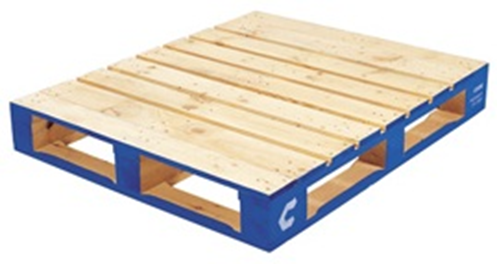Racking load notices are vital to ensure safe loading of storage racks.
- Keith D Goodfellow (SARI)

- May 6, 2020
- 3 min read
Updated: Jun 17, 2025
Racking load notices are vital since they tell you what weights the racks can hold along with other important information about beam positioning and safety warnings.
Without the correct load data, how do you know what is a safe loading limit for your racks?
Load notices are required to all areas and rack configurations and should be supplied by the installer as part of the installation in the SEMA approved format as defined in the SEMA publication ‘Load Notices’ to comply with SEMA guidelines HSG 76 and PUWER regulations.
They should be A3 landscape size and displayed prominently throughout the warehouse in the SEMA approved format as defined in the SEMA publication ‘Load Notices’.
SEMA Codes and HSG 76 (Warehousing and storage: A guide to health and safety) are guidance documents but to be clear they are not a legal requirement and so there is no actual law requiring you to display load notices on your racking system.
Having said that it's difficult to imagine how else you can provide all the load notice information and still comply with Health and Safety legislation without providing load notices. Note: You must provide adequate information to operate your racks safely (PUWER) so if you don’t have load notices and there was an accident you would be on very thin ice!
Where new load notices are fitted they must comply with safety sign legislation. EU Directive 92/58/EEC. Old load notices fitted before 1996 do not need to be changed if they show all relevant data. So what is relevant data. The image below shows the recommended format of a racking load notice.

Adjustable beam pallet racking notices should display the following information:
1. Date supplied and contract reference
2. Supplier
3. Maximum permissible unit load or loads per level
4. The pallet configuration and maximum weight per pallet location
This should clearly show the pallet configuration. Here we see 2 x 1,000kg pallets. If alternate pallet configurations are used then this should also be shown i.e. 3 x 666kg pallets.
Where you have different beam capacities i.e. a longer or shorter beam or a different beam profile than make sure they are compatible with the data displayed.
5. Maximum bay load
You must ensure that the total loading of all beams in a bay never exceeds this figure.
6. Number of levels per bay
In some cases you may find that if all beams are loaded to their rated capacity the maximum bay loading is exceeded so great care is needed. If you cannot ascertain the pallet loads then it may be safer to derate the beams and have an amended notice fitted to avoid overloading.
7. Height to first beam level
This is a key parameter in determining the bay load. If the first beam is raised or removed, then bay load will reduce.
8. Beam pitch thereafter (beam to beam dimension)
An important parameter in bay load. If pitch is increased bay load will reduce.
9. Required safety information
If any of this information is missing, appears implausible or incompatible with the rack structure, you should refer to the supplier for guidance and issue of an updated notice.
I would always caution against making your own corrections to the notice, since if you get it wrong, then you could be held liable for any consequences, and people can be surprisingly selective when recalling what advice they gave you if there is a problem!




Comments